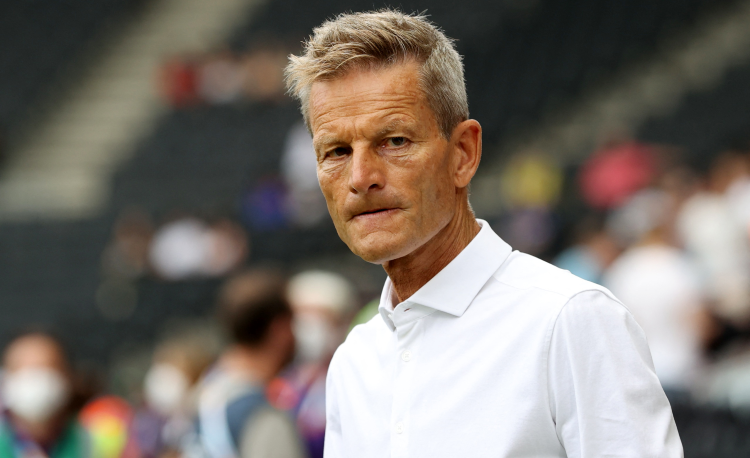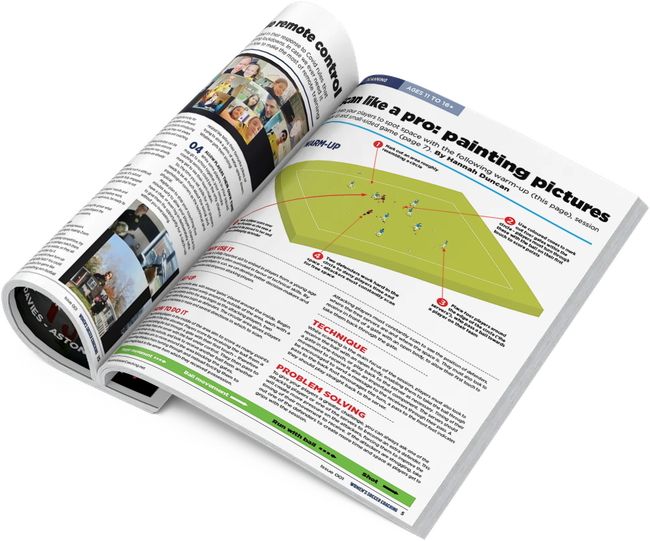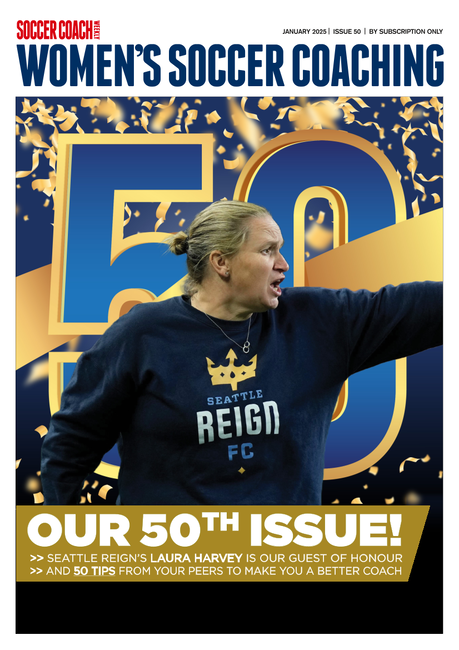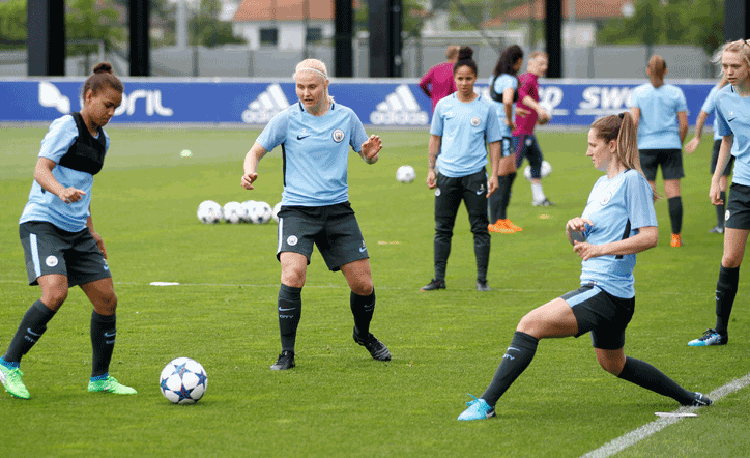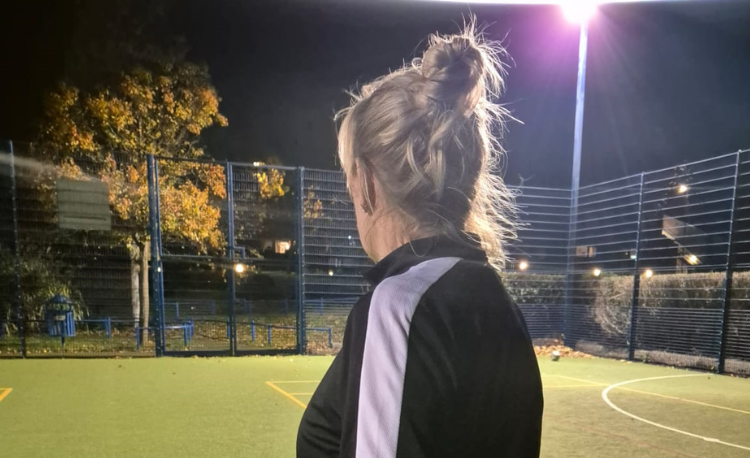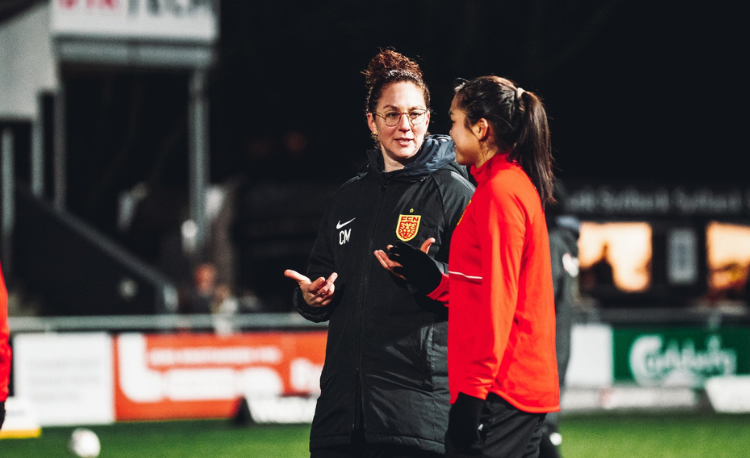You are viewing
1 of your 3 free articles
Lars Søndergaard: Taking Denmark to the 2023 World Cup
After 16 years, Denmark are back at the World Cup. With Pernille Harder heading up a squad learning from an early exit at the Euros, head coach Lars Søndergaard tells Steph Fairbairn they are well prepared...
For the first time since 2007, Denmark are going to the Women’s World Cup.
An outstanding qualifying campaign – winning all eight games, scoring 40 goals and conceding only two - was built on the lessons from last year’s Euros.
On that occasion, Denmark didn’t get out of a group which also contained Germany, Spain and Finland.
Heading into this tournament, though, they are equipped with more experience and, many would say, an easier group. Alongside European champions England, Denmark’s other early opposition are China and Haiti.
While head coach Lars Søndergaard feels progress this time round is more realistic, he is focused on the different challenges the draw represents.
“We are up against tough opponents, but that’s the experience we now have to test a little bit,” Søndergaard told Women’s Soccer Coaching.
“We are used to playing only European teams. The players are playing in Europe and they are playing against mostly European players and the culture.
“Now we are going to go up against two completely different cultures in Haiti and China. We know they will be fully prepared for it. I think we are prepared for it, too,
“It is exciting to play against other cultures. It’s something completely different to just playing European teams.
“I think there is a realistic possibility we can go through if we play to our best.
“I guess we will play in Sydney in front of a full stadium. It is going to be a big experience...”
“I hope we see it as a possibility to show the world what we can do. I guess we will play in Sydney in front of a full stadium. It is going to be a big experience.
“In our preparation this year, we have played against teams like Sweden, Norway, France and Japan and had very close games.
“We could have lost all games, but we could also have won all games. I think we have come closer to those teams.
“That also means we have come closer to England. So I also see it that we have a chance against England.”
The preparation Søndergaard refers to began in January of this year when he and his staff team put together a schedule for the months leading up to the big event, and began their conversations with players.
Despite an obvious and necessary awareness of what is going on with teams around them, Denmark’s focus has been on who they are as a team.
“We haven’t been talking a lot about the opponents yet,” said Søndergaard. “We have more or less looked at our own playing style.
“When we were together for the first games [Tournoi de France fixtures in February and friendlies in April] we tried to focus on our playing style, and how we want to present ourself.
“We looked at defensive things. We looked at how we want to attack things in general. Then we looked specifically on the teams we played against - but always having in mind, as a Danish team, how do we want to present ourself? How do we want to play? How can we succeed as an international team?
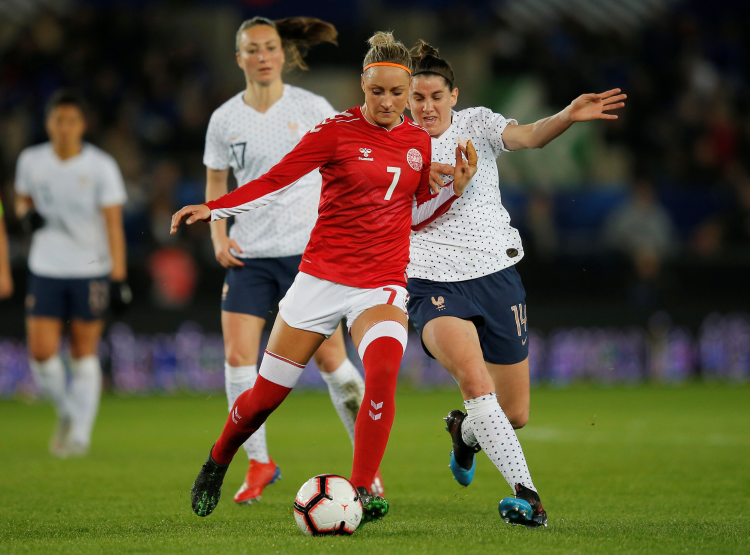
“In qualification, we always tried to be the one who controlled the game with the ball. I think, in a way, Danish football is like that.
“We want to be a team who can play with the ball but we also have to acknowledge we can’t just pick the same amount of top quality players like England, Germany or America, where they have a lot more players.
“So we also have to be able to control games without the ball. We want to control the games with the ball, but we know we also have to be good defensively and make it hard for our opponents to score goals or create chances against us.
“We have the Danish mentality. We have technically good players and we also have very good players like Pernille Harder, which is important to winning a big tournament.
“You need those who can be extraordinary and who can score goals, create goals and create chances out of nothing.”
Lars on how he will combat teams targeting Pernille Harder“They will be talking a lot about how to close her down, that is for sure. And what we coaches are doing is making plans for different scenarios in games.
|
Harder, the Denmark captain, is certainly a stand-out member of the squad.
The 30-year-old - who has just joined Bayern Munich after a trophy-laden three years at Chelsea - is the country’s leading all-time scorer with 70 goals. With 140 caps, she is also Denmark’s fifth most-capped player.
Their current squad also includes the second and fourth names on that list - Reading midfielder Sanne Troelsgaard (176 caps) and Everton defender Katrine Veje (144 caps).
Those three are the experience in a squad that Søndergaard calls “a good mix”.
“We have some very good young players just starting their career in national-team football and we have some experienced players.
“In the last couple of years, we introduced about 50% new players to the team. That also means they don’t have many caps.
“It could be a disadvantage, but I hope it will be an advantage that a lot of those players took part in the Euros last year.
“When players develop, it always takes time. They have to develop on a certain stage. They have to play international games and it takes time before they get used to the tempo.
“So I hope that the experience from last year at the Euros will be good for them. The older players have taken part in other tournaments, so they know what it’s like.
“These tournaments are special. It’s not just one or two games, it’s a competition and one error in a group match can be a goodbye. You have to be there for each game.
“I think we have a good mix, an exciting group of players that can only develop, but I hope have developed enough now that we can succeed in some way at the World Cup.”
This opportunity to balance youth with experience is a result of growing opportunities for Danish female footballers to play at the highest level.
Though the progress of the professional women’s game in Denmark may lag behind other countries, national team players are benefiting from the opportunities elsewhere.
Søndergaard has noticed a marked difference since he took on the head coach role five-and-a-half years ago.
Related Files
“The development in women’s football is just extraordinary,” he said. “I remember when I came in 2018, I think I had seven or eight players playing abroad.
“Now I think we have more than 60 players playing outside of Denmark in different countries.
“In a way, my job has changed due to the development in women’s football. You see it everywhere.
“It is hard to believe it’s just five or six years ago when I couldn’t find a game on television. I had to look at different streams, perhaps from Facebook, when I wanted to watch a game from Spain.
“Now I can see almost every game on television or on streams. Women’s football has changed, in a really dramatic but a positive way.
“In Denmark, we don’t see the development in club football yet as you see it in England or Germany. But we are fighting and there are positive signs that it’s going to be much bigger than it is at the moment.”
Returning to the world stage then, for the first time since 2007, is not just significant in terms of demonstrating how far Danish women’s soccer has come, but it can also act as a beacon of hope for how far it can go in the future.
“If we can go far in the World Cup, it will mean a lot to the Danish nation...”
Søndergaard said: “[As coaches and players], we are fighting for our nation. We are fighting for Denmark.
“The excitement to do that for our own sake, for the nation’s sake, is so important for those who have been following women’s football in Denmark.
“If we win, it means something special for them. And if we can go far in the World Cup, it will mean a lot to the Danish nation.
“We’ve seen it with the men’s national team [European champions in 1992 and semi-finalists in 2021]. We’ve seen it with our handball teams [three-time Olympic women’s gold medallists and men’s gold medallists in 2016] – this proudness that we can, as a smaller nation, accomplish or win something is important.
“We also want each player to see it as a possibility to be on the biggest scene in women’s football. To see it as a chance, a possibility.
“We have to enjoy ourselves. Of course, it’s easier said than done, when you’re standing there and the national anthem is being played before the first game.
“We have to see it as something that we have achieved together. Now we want to make everything out of what’s possible.
“So let’s enjoy it, enjoy the moment. But also be totally focused in every second of the game.”

‘a lot of wise people tell you what errors you made!’ – Lars on the privileges and pressures of coaching his country“To represent your country is something that makes everyone, including my family, proud.
|
Newsletter Sign Up
Newsletter Sign Up
Discover the simple way to become a more effective, more successful soccer coach
In a recent survey 89% of subscribers said Women's Soccer Coaching makes them more confident, 91% said Women's Soccer Coaching makes them a more effective coach and 93% said Women's Soccer Coaching makes them more inspired.
*includes 3 coaching manuals
Get Inspired
All the latest techniques and approaches
Women's Soccer Coaching offers proven and easy to use soccer drills, coaching sessions, practice plans, small-sided games, warm-ups, training tips and advice.
We've been at the cutting edge of soccer coaching since we launched Soccer Coach Weekly in 2007, creating resources for the grassroots youth coach, following best practice from around the world and insights from the professional game.
